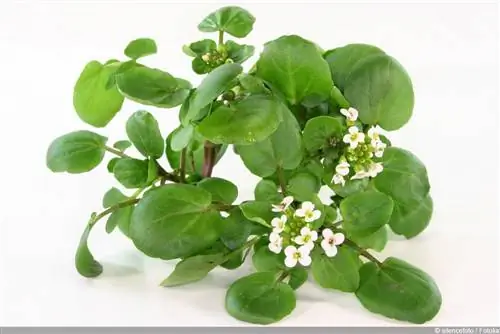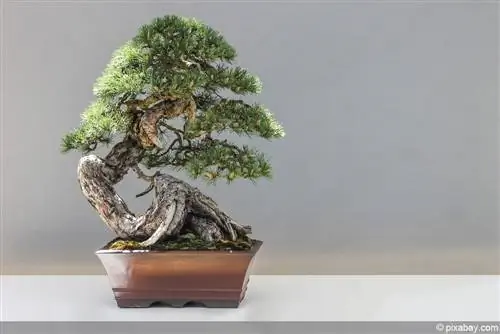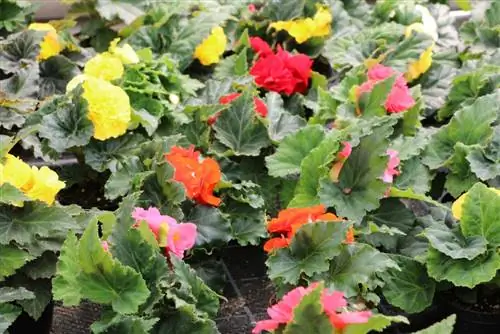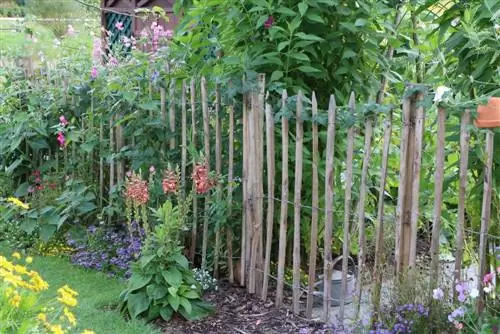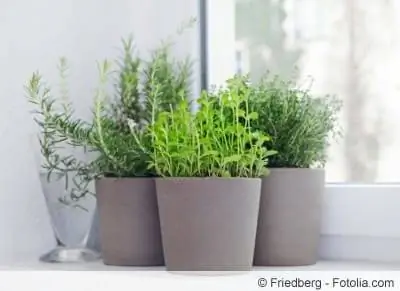- Author admin [email protected].
- Public 2023-12-17 03:39.
- Last modified 2025-01-24 12:45.
The small watercress is simple in appearance, but by no means simple in taste. Its aroma is strong, with a hint of fine spiciness. Juicy green, freshly cut and with plenty of vitamins, it perfects our dishes in no time. This miracle herb can also be grown easily in the home garden or on a windowsill. Even in winter it is always ready to eat. Only water is his daily elixir of life.
Natural Occurrence
The great triumph of watercress first started in Eurasia. Nowadays it thrives all over the world. The plant prefers to settle in moist areas. It can be found in nutrient-rich streams, ponds and springs. Stream mustard is another name for this plant because it often grows along streams and also has a sharp, mustard-like taste. Brook mustard can be collected in the wild all year round. If you don't want to go on a long search, you can buy commercially grown watercress or grow it yourself.
Seeds
Getting some seeds is the first step toward growing your own watercress. Green stems and leaves sprout from them in no time. Flowers soon follow, from which pods with new seeds develop. This is where the natural cycle of reproduction closes. If you don't have seeds yet, you can buy them cheaply.
- Seeds are available for purchase at nurseries
- Well-stocked supermarkets also offer watercress
Native watercress rarely manages to bloom. As soon as it has reached a certain height, the scissors are used. The spicy leaves are a popular ingredient in the kitchen. However, it is worth letting a few plants grow in peace in order to obtain seeds for the next sowing.
Location

The cress likes to be sunny and bright. The main thing is that it is surrounded by water, from which ideally only the head with the top leaves sticks out. At lunchtime, however, she is happy about some protection from the blazing sun.
Growing in the garden
The watercress likes it when its stems, which are up to 90 cm high, are in water. This does not only apply to the wild specimens, plants cultivated in the garden should also have these conditions if possible. This is rarely the case right from the start; rather, a suitable place has to be specifically created. It's best to sow watercress directly outdoors in May and follow these steps:
- Dig a trench about 40 cm deep.
- Water the soil in the trench well, but no standing water should yet form.
- Sow the cress in it.
- Cover the seeds lightly with soil.
- Increase the water level in the trench gradually according to the growth of plants.
Tip:
Always water with fresh, clear water that contains sufficient nutrients.
Cultivation on the windowsill
If you appreciate the delicious tasting herb as a cooking ingredient but don't have your own garden, you don't have to go without it. Watercress is usually used in smaller quantities anyway because it is very spicy and slightly spicy. A few pots on the windowsill are enough to meet the needs. After cutting it off, it sprouts again and quickly supplies the next portion for the cooking pot.
- optimum time for sowing is from May to July
- sow in a waterproof, shallow tray
- sandy substrate is ideal
- the earth must always be moist
- Germination takes about three weeks
- optimal germination temperature is 20 degrees Celsius
- Prick out in August / from about 4-6 cm in size
- The harvest can begin from a height of around 8 cm
Tip:
Potted cress can also bloom and produce seed pods if some stems are spared from the scissors.
Pouring
Watering is the focus of care. This plant, which thirsts for water, needs to be supplied with it every day. It's good if the pot is on the kitchen windowsill and the tap is not far away.
- Earth must never dry out
- don't be afraid of waterlogging
- Stems like to be almost completely submerged
- use fresh and clean water
Fertilize
If the flower cress receives plenty of nutrients, its growth can hardly be slowed down. Fertilizer is the ideal fuel. But caution is advised here. Even if the cress can share the home with other houseplants, this certainly does not apply to the fertilizer. The fertilizer is absorbed by it and ends up on the dinner plate, where such fertilizer has no place.
- Watercress is not a purely ornamental plant
- it is intended for consumption
- Fertilizer is absorbed by the plant
- is also contained in harvested leaves
- therefore only fertilize with food fertilizer
- do not use commercial flower fertilizer
Pests
Watercress is well protected at home. In the garden, however, it is freely accessible to small animals and is often visited. The following pests are most common:
- Snails
- Lice
Snails are best collected before they can cause major damage. To do this, it is necessary to check the cress regularly in order to discover the slimy visitors early on.
Aphids can be repelled with a soapy water solution.
Tip:
Many chemical agents also help against these two plagues. However, the cress treated with this is no longer suitable for consumption.
Diseases
Fungal diseases are also a threat in the cress bed. The high humidity, which is an important requirement for growth, can also promote downy mildew. Cress that is infected with this fungus is no longer edible. It can be left as a pretty decoration. However, if you don't want to do without the aromatic leaves, you have to sow the mustard again.
Wintering
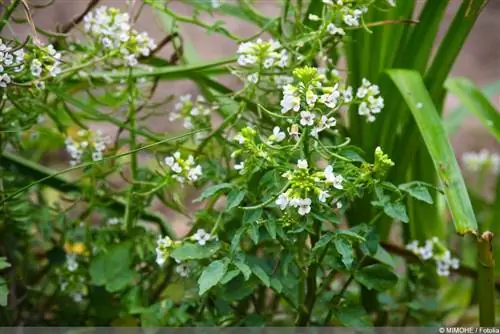
Watercress that grows outside can spend the winter outdoors. The cold doesn't harm her, provided the water around her doesn't freeze. A sheltered place and cover can keep the frost away from it to some extent.
Harvesting
The most important thing about growing watercress is harvesting. For this reason it was sown, cared for and watered. Harvesting is easy. As soon as the stems have exceeded the size of 8 cm, they are ready to harvest. Then you can, but don't have to, harvest it yet. The best time to harvest is always when the cress is needed to prepare dishes. It couldn't be fresher.
- only harvest when needed
- You can also harvest in winter
- Cut the cress just above the ground
- so the stems can continue to grow
- don’t forget to keep watering
- even harvested cress still needs plenty of water
By the way, even those who haven't sowed can sometimes reap. Wild-growing brook mustard tastes just as delicious as the cultivated varieties at home. All you have to do is look for it and find it.
Tip:
Fresh cress tastes best and offers the most vitamins. But if necessary, it can also be stored in the refrigerator for up to seven days. To do this, the freshly cut cress is placed in a plastic bag.
Use in the kitchen
The watercress is filled to the brim with he althy ingredients. These include iron, iodine and vitamin C. It is used as a medicinal plant in many places. But it owes its popularity to the strong taste of the leaves. The mustard oil they contain provides spiciness. The most accurate term for watercress would be seasoning.
- gives “bland” salads more life, more pizzazz
- gives the soup more flavor
- other dishes also benefit from their aroma
- ideal as a decoration on the plate
- pretty as a decoration for sandwiches
There are no limits to the creative chef here. Watercress can also serve as a purely vegetable side dish. Unfortunately, watercress cannot be dried or frozen. The consistency suffers and the watercress loses its typical taste.

